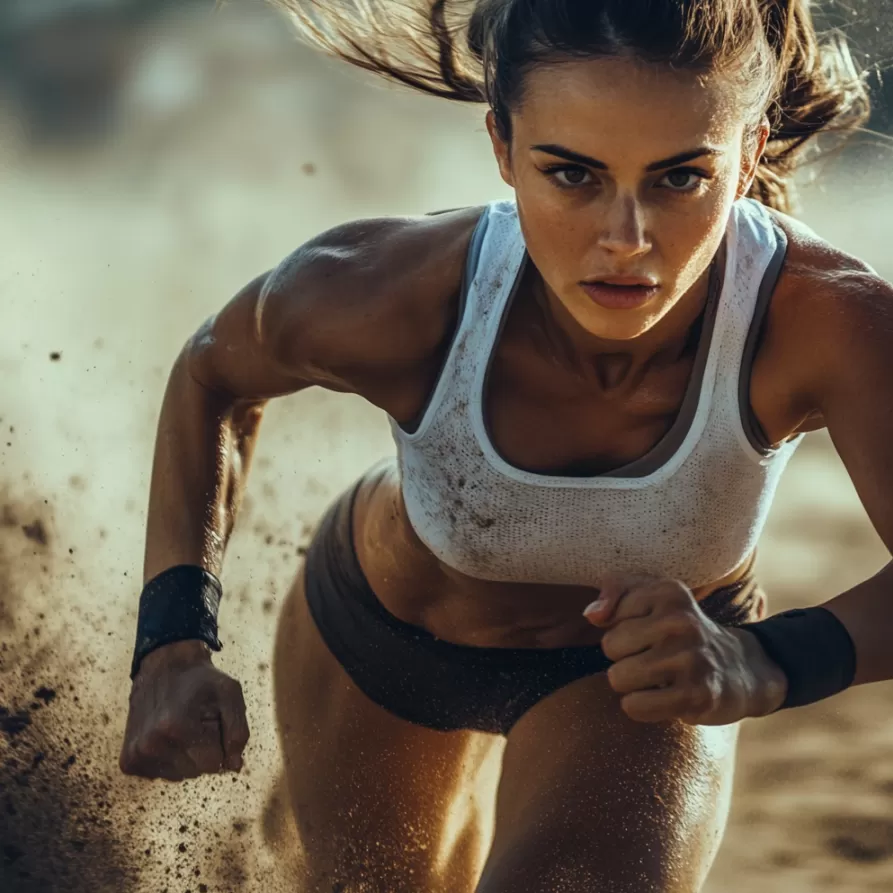Gender Dynamics in Sports: Breaking Stereotypes and Barriers


It is an information portal dedicated to the study of the impact of sports on various aspects of public life.
Breaking News:
Online Gambling Site: The Double-Edged Sword of Digital Betting in Modern Society
The Impact of Sports on Economic Mobility in Underserved Communities
The Role of Sports in Fostering National Identity in Multicultural Societies
Gender Dynamics in Sports: Breaking Stereotypes and Barriers
E-Sports: Redefining Athleticism and Its Societal Perception
Kathmandu Nepal
Wednesday, Jul 9, 2025

The landscape of sports has undergone significant transformations over the decades, particularly concerning gender dynamics. Historically, sports have been a reflection of societal norms, often reinforcing traditional gender roles and expectations. However, as society progresses towards greater equality and inclusivity, the realm of athletics is no exception. This introduction sets the stage for exploring how gender roles in sports have evolved, the shifting perceptions that accompany this change, and the critical importance of dismantling longstanding stereotypes and barriers.
In the past, sports were predominantly seen as a male domain, with women facing considerable obstacles to participation and recognition. Over time, this perspective has gradually shifted, influenced by broader social movements advocating for gender equality. Today, we witness a more balanced representation of genders in various sports, though challenges remain. The increasing visibility of female athletes, the rise of mixed-gender competitions, and the growing support for non-binary and transgender athletes are all indicators of this ongoing transformation.
Addressing and breaking down gender stereotypes in sports is not merely a matter of fairness but also essential for the progress and innovation of athletics. Stereotypes can limit opportunities, stifle talent, and create an environment where athletes are judged more by their gender than their abilities. By challenging these preconceived notions, the sports community can foster a more inclusive and supportive environment that encourages participation from all genders, ultimately enhancing the quality and diversity of competition.
Understanding the current gender dynamics in sports necessitates a look back at the historical context. The journey of gender inclusion in sports has been marked by significant milestones, persistent challenges, and the continual struggle against outdated norms.
Traditionally, sports have been associated with masculinity, emphasizing strength, aggression, and competitiveness—traits stereotypically linked to men. Conversely, femininity has often been connected with grace, beauty, and passive participation. These dichotomous views have shaped the types of sports deemed appropriate for each gender and influenced public and institutional support for male and female athletes differently.
Several pivotal moments have marked the progress of women in sports:
Despite these advancements, outdated norms persist, often hindering full gender equality in sports. These include biased media coverage, unequal pay, and limited access to leadership roles within sports organizations. Such entrenched attitudes continue to impact the opportunities available to female and non-binary athletes, underscoring the need for ongoing efforts to challenge and change these perceptions.
Media plays a crucial role in shaping societal perceptions, and its influence on gender dynamics in sports is profound. The way athletes are portrayed can either reinforce stereotypes or promote a more inclusive and equitable view of gender in athletics.
Traditional media often perpetuates gender stereotypes by emphasizing physical appearance, personal lives, and emotional attributes of female athletes, while focusing on performance, strength, and competitiveness for male athletes. This disparity not only affects public perception but also impacts the marketability and sponsorship opportunities for female athletes.
The advent of social media has provided a powerful tool for athletes to take control of their narratives and challenge traditional media portrayals. Female and non-binary athletes are increasingly using platforms like Instagram, Twitter, and TikTok to showcase their skills, advocate for gender equality, and connect directly with fans. This shift allows for more authentic and diverse representations, helping to dismantle long-standing stereotypes and promote a more inclusive view of gender in sports.
Achieving gender equality in sports requires addressing systemic disparities in access to resources, funding, and opportunities. Despite progress, significant gaps remain that hinder the full participation and recognition of all genders in athletics.
One of the primary challenges in achieving equal opportunities is the unequal distribution of resources. Female and non-binary athletes often receive less funding, sponsorship, and access to top-tier training facilities compared to their male counterparts. This disparity limits their ability to compete at the highest levels and achieve financial stability through sports.
Professional leagues for female athletes typically offer lower salaries, fewer benefits, and less media exposure than male leagues. Additionally, sponsorship opportunities are more abundant for male athletes, further exacerbating the financial inequality.
Various policies and movements are striving to address these inequalities and create a more equitable sports environment. Initiatives include:
By tackling these disparities, the sports community can move closer to a future where all athletes, regardless of gender, have equal opportunities to excel and succeed.
The journey towards gender equality in sports has been significantly shaped by the remarkable achievements of trailblazing athletes who have defied societal expectations and shattered stereotypes. These individuals not only excelled in their respective sports but also became symbols of empowerment and agents of change, inspiring generations to come.
Throughout history, numerous athletes have stood out for their courage and determination to break through gender barriers. Their stories highlight the struggles and triumphs that come with challenging the status quo.
The accomplishments of these trailblazers extend beyond their individual successes. They have redefined what is possible for athletes of all genders and have significantly influenced public perception and policy.
Gender dynamics in sports do not exist in isolation but intersect with other aspects of identity, including race, socioeconomic status, and sexuality. Understanding these intersections is crucial for fostering a truly inclusive sporting environment.
Athletes who belong to multiple marginalized groups often face compounded challenges that can hinder their participation and success in sports.
To effectively address the diverse challenges faced by athletes, an intersectional approach is necessary. This means recognizing and addressing the multiple facets of an athlete’s identity that influence their experience in sports.
Gender testing has been a contentious issue in competitive sports, raising ethical questions and affecting the lives of countless athletes. The history and current practices surrounding gender verification tests highlight the complexities of balancing fairness and inclusion.
Gender verification tests have been used in sports for decades to ensure fair competition. However, these tests have often been criticized for their invasive nature and lack of scientific basis.
The pressure and stigma associated with gender testing can have profound effects on athletes’ careers and mental well-being.
There is a growing movement to shift the focus from punitive measures to creating a more inclusive and fair sporting environment.
Creating an inclusive sporting environment requires comprehensive efforts in both policy-making and education. These initiatives play a crucial role in breaking down barriers and fostering equality in sports.
Schools, universities, and sports organizations are pivotal in promoting gender inclusivity through targeted policies and programs.
Examining successful programs and initiatives provides valuable insights into effective strategies for promoting gender inclusivity in sports.
Building an inclusive sports environment also relies on the active participation of allies who support gender equality.
Men play a crucial role in the movement towards gender equality in sports. Their involvement and support are essential for creating a balanced and inclusive sporting culture.
Male athletes and coaches can significantly influence the perception and acceptance of gender equality in sports by acting as allies.
Challenging traditional notions of masculinity is essential for creating a more inclusive and supportive sports environment.
Creating an inclusive sports environment is a collective effort that requires participation from all genders.
Looking ahead, the future of gender dynamics in sports holds both challenges and opportunities. Emerging trends and ongoing efforts promise a more inclusive and equitable sporting landscape.
New developments in sports are paving the way for greater inclusivity and representation of all genders.
The next generation of athletes and leaders is poised to drive further changes in gender dynamics within sports.
Achieving gender equality in sports requires the active participation of everyone involved in the sporting ecosystem.
The journey towards gender equality in sports is ongoing, with significant strides made and many challenges yet to overcome. By celebrating trailblazers, addressing intersectional challenges, rethinking gender norms, and promoting inclusive policies and education, the sports community can continue to break down barriers and create a more equitable environment for all athletes.
Key milestones include the implementation of Title IX in 1972, the inaugural FIFA Women’s World Cup in 1991, and the progressive inclusion of more women’s events in the Olympic Games.
Media representations can reinforce gender stereotypes by focusing on physical appearance and personal lives of female athletes, while highlighting performance and competitiveness in male athletes. This affects public perception, marketability, and sponsorship opportunities for athletes.
An intersectional approach is important because it recognizes the multiple facets of an athlete’s identity, such as race, socioeconomic status, and sexuality, which influence their experiences and challenges in sports. This ensures that inclusivity efforts address the unique needs of all marginalized groups.